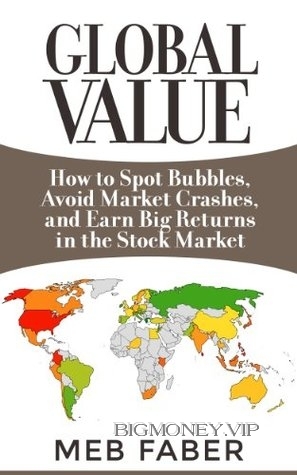
Chapter 1 - Bubbles Everywhere
A fellow student of bubbles, Jeremy Grantham at Grantham, Mayo, Van
Otterloo and Co. (GMO) has collected data on over 330 bubbles in his
historical studies. He points out in a recent research piece, “Time to Wake
Up: Days of Abundant Resources and Falling Prices are Over Forever,” that
one of the key difficulties is distinguishing when a bubble is indeed
occurring, and when there actually is a paradigm shift. In other words, when
is this time really different?
Three of the most famous bubbles in history are the South Sea Company
bubble of 1711–1720, the Mississippi Company bubble of 1719–1720, and
the Dutch tulip mania of the early seventeenth century, all of which saw
drawdowns from peak to trough of 80-99% (Dreman, Contrarian Investment
Strategies). We are not going to review these bubbles at length as many have
done a wonderful job already, and we have included a reading list at the end
of this piece for further exploration. While tulip mania and the Mississippi
Company are both fascinating narratives, this introduction focuses on the
South Sea Bubble of 1711-1720 since the term “bubble” was actually coined
during this period.
The South Sea Company was a British company founded by the high-
ranking government official Lord Treasurer Robert Harley. England had
amassed a large national debt during the War of Spanish Succession, and the
company was founded to help fund the government debt in a roundabout
way, since the Bank of England had the only banking charter at the time.
The South Sea Company issued new shares of stock to existing bondholders
of the government debt. In exchange for assuming the debt, the government
granted the company a monopoly on trade with South America while
continuing interest payments on the debt in the amount of 6% per year.
In theory, this was a win-win scenario for all parties. The company received
cash flows to fund operations (government bond payments), the government
reduced their interest payments, and the holders of the government debt
received shares in a company founded with a built-in monopoly and staffed
by high ranking government officials. The South Sea Company continued to
acquire more debt over the next few years with lower and lower interest
payments.
WHAT COULD POSSIBLY GO WRONG?
The investors in South Sea Company stock were convinced that the troves of
wealth coming out of the South American gold mines would be traded for
Europe’s fine textiles and other refined goods, all at an obscene profit.
Unfortunately, profits from the shipping monopoly, which also included
rights to deliver slaves to South America, never materialized, as only one
ship was allowed transport per year. This reality did not stop a speculative
frenzy from ensuing, as many secondary offerings of South Sea stock were
initiated with politicians receiving shares and options, thus incentivizing
them to further inflate the stock price further.
As speculative trading in South Sea Company stock increased, other joint
stock companies were launched on the London exchange. Charles MacKay
reviews some of the speculative companies being founded during this period
in his book Extraordinary Popular Delusions and the Madness of Crowds,
including one company that was founded with the purpose of “carrying on
an undertaking of great advantage, but nobody to know what it is.” In effect,




